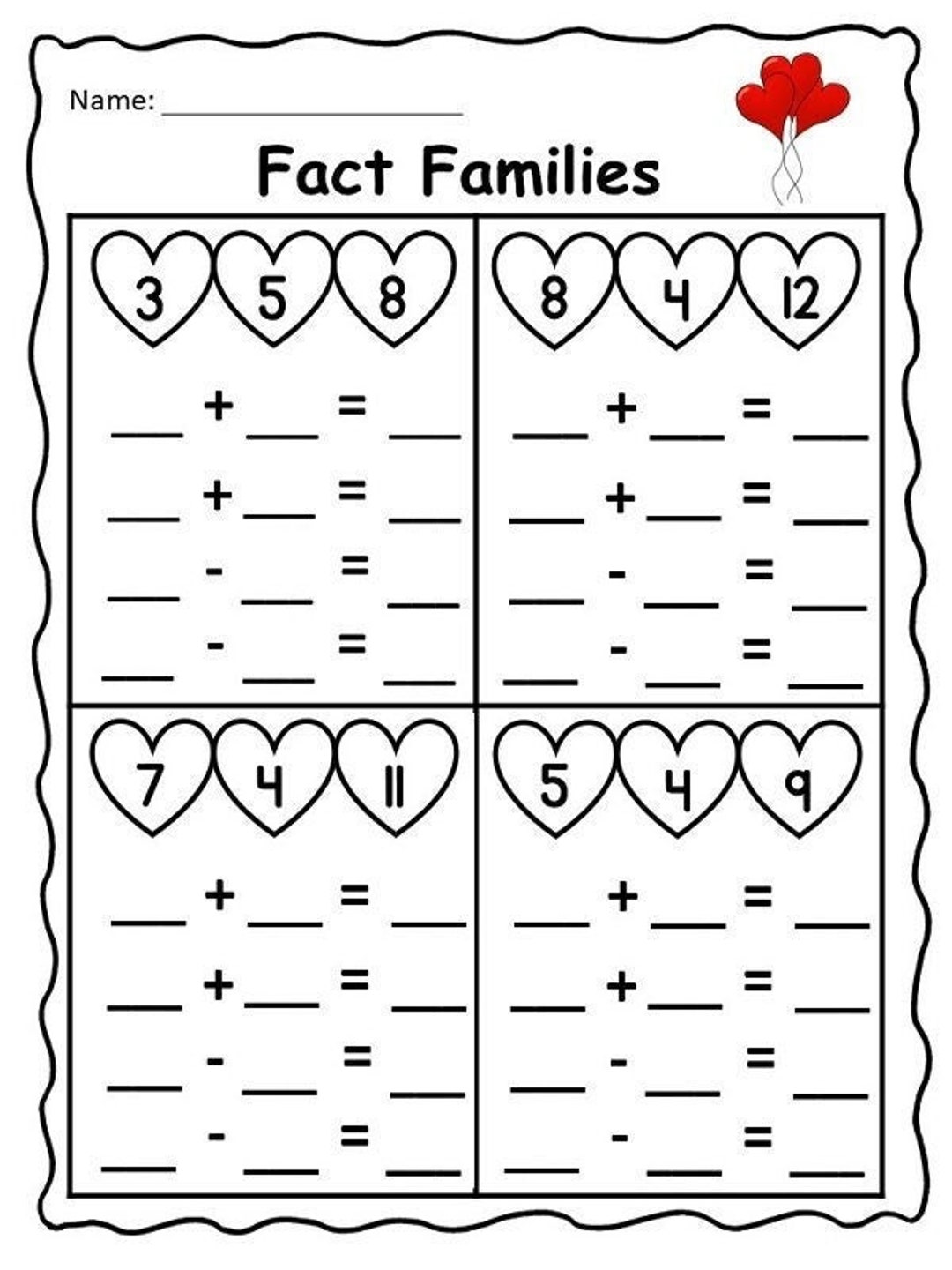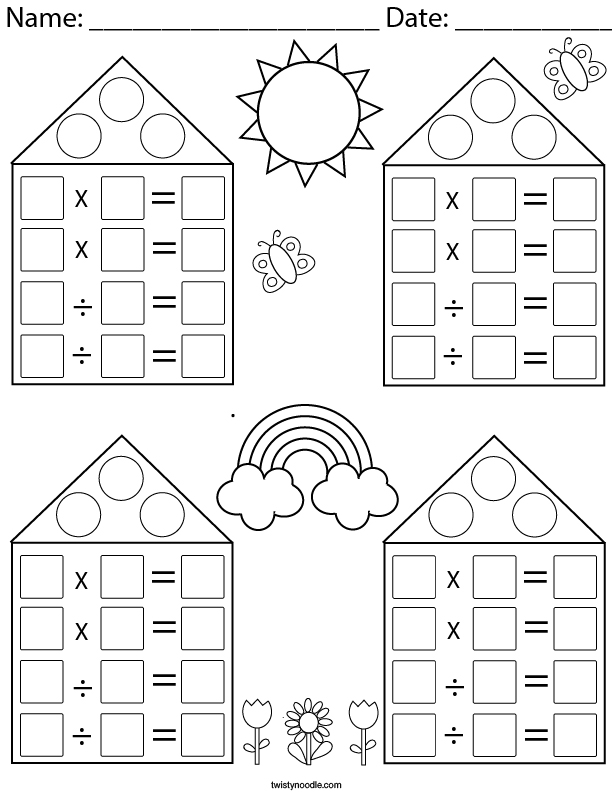Understanding The Fact Family Of 15, 5, And 3: A Comprehensive Guide
The concept of a "fact family" is a fundamental part of elementary mathematics education, and understanding the fact family of 15, 5, and 3 is essential for building a strong foundation in arithmetic. Fact families help students grasp the relationships between numbers and operations, making it easier for them to solve problems involving addition, subtraction, multiplication, and division. This article will delve deep into the fact family of 15, 5, and 3, providing a clear and structured explanation for learners of all levels.
By exploring the fact family of 15, 5, and 3, we aim to enhance your understanding of how these numbers interact through various mathematical operations. Whether you're a teacher looking for resources or a student seeking clarity, this article will cover everything from basic definitions to advanced applications. Keep reading to uncover the intricacies of this numerical relationship.
In the following sections, we will discuss the significance of fact families, their role in mathematics, and how they apply to the numbers 15, 5, and 3. Additionally, we will provide practical examples, exercises, and insights to ensure a thorough understanding of the topic. Let's dive in!
Read also:Andrew Dawecollins The Rising Star In The World Of Innovation And Creativity
Table of Contents
- What is a Fact Family?
- Numbers in the Fact Family of 15, 5, and 3
- Addition and Subtraction Relationships
- Multiplication and Division Relationships
- Real-World Applications of Fact Families
- Common Mistakes to Avoid
- Tips for Teaching Fact Families
- Interactive Exercises and Practice Problems
- Historical Perspective of Fact Families
- Conclusion and Next Steps
What is a Fact Family?
A fact family is a group of math facts that use the same numbers. In this case, the numbers 15, 5, and 3 form a fact family. These numbers are related through basic arithmetic operations like addition, subtraction, multiplication, and division. Understanding fact families helps students recognize patterns and build fluency in solving math problems.
Fact families are particularly useful in elementary education because they simplify complex concepts and encourage students to think critically about numbers. By mastering fact families, students can develop a deeper understanding of how numbers interact with one another.
Numbers in the Fact Family of 15, 5, and 3
Overview of the Numbers
The numbers 15, 5, and 3 are the core components of this fact family. Each number plays a specific role in the relationships defined by addition, subtraction, multiplication, and division. Let's explore how these numbers work together to form a cohesive fact family:
- 15 is the largest number and often serves as the result or total in addition and multiplication problems.
- 5 and 3 are smaller numbers that combine to form 15 through addition and multiplication.
Key Relationships
These numbers are interconnected through four primary operations:
- Addition: 5 + 3 = 15
- Subtraction: 15 - 5 = 3 and 15 - 3 = 5
- Multiplication: 5 × 3 = 15
- Division: 15 ÷ 5 = 3 and 15 ÷ 3 = 5
Addition and Subtraction Relationships
Addition and subtraction are the most straightforward operations in a fact family. For the numbers 15, 5, and 3, the following relationships hold true:
- 5 + 3 = 15
- 15 - 5 = 3
- 15 - 3 = 5
These equations demonstrate how the numbers work together in both forward and reverse operations. Mastery of these relationships helps students build confidence in their arithmetic skills.
Read also:What Does Lakhani Mean Unveiling The Secrets Behind This Fascinating Name
Multiplication and Division Relationships
Multiplication and division are slightly more advanced but equally important in fact families. For the numbers 15, 5, and 3, the following relationships are key:
- 5 × 3 = 15
- 15 ÷ 5 = 3
- 15 ÷ 3 = 5
These equations highlight the inverse relationship between multiplication and division, reinforcing the interconnectedness of the numbers in the fact family.
Real-World Applications of Fact Families
Fact families are not just theoretical concepts; they have practical applications in everyday life. For example:
- Shopping: If you buy 5 items at $3 each, the total cost is $15.
- Cooking: A recipe that calls for 15 cups of flour can be divided into 5 batches of 3 cups each.
- Time Management: If you work 15 hours in a day and divide your time into 5 tasks, each task takes 3 hours.
Understanding fact families helps individuals solve real-world problems efficiently and accurately.
Common Mistakes to Avoid
When working with fact families, students often make the following errors:
- Confusing addition with subtraction or multiplication with division.
- Forgetting the inverse relationships between operations.
- Not verifying their answers through reverse calculations.
To avoid these mistakes, encourage students to practice regularly and double-check their work.
Tips for Teaching Fact Families
Teaching fact families effectively requires creativity and engagement. Here are some tips for educators:
- Use visual aids like number lines and diagrams to illustrate relationships.
- Encourage hands-on activities, such as using manipulatives like blocks or counters.
- Incorporate games and interactive exercises to make learning fun.
By employing these strategies, teachers can help students grasp the concept of fact families more easily.
Interactive Exercises and Practice Problems
Exercise 1: Fill in the Blanks
Complete the following equations using the numbers 15, 5, and 3:
- __ + __ = 15
- 15 - __ = __
- __ × __ = 15
Exercise 2: Word Problems
Solve the following real-world scenarios:
- If you divide 15 candies equally among 5 children, how many candies does each child receive?
- If you combine 5 apples and 3 oranges, how many fruits do you have in total?
Historical Perspective of Fact Families
The concept of fact families has been a cornerstone of mathematics education for decades. Early mathematicians recognized the importance of understanding numerical relationships, and fact families emerged as a practical tool for teaching arithmetic. Today, they remain a vital part of elementary curricula worldwide.
Research from reputable sources like the National Council of Teachers of Mathematics (NCTM) supports the use of fact families in building foundational math skills. By studying the history of fact families, educators can appreciate their enduring relevance in modern education.
Conclusion and Next Steps
In conclusion, the fact family of 15, 5, and 3 is a powerful tool for understanding the relationships between numbers and operations. By mastering this concept, students can improve their arithmetic skills and apply their knowledge to real-world situations. We encourage readers to practice the exercises provided and explore additional resources for further learning.
Take action today by sharing this article with others or exploring more topics on our website. Together, we can build a stronger foundation in mathematics for learners of all ages.


